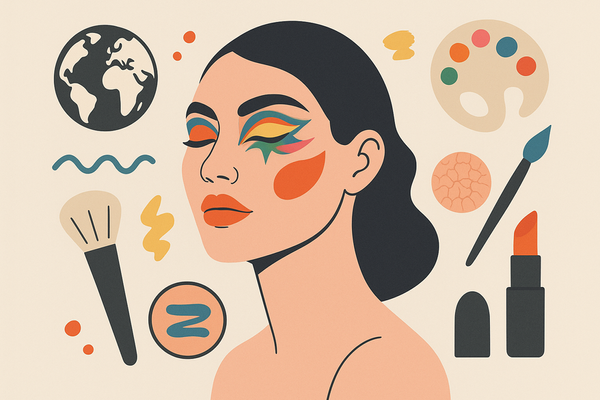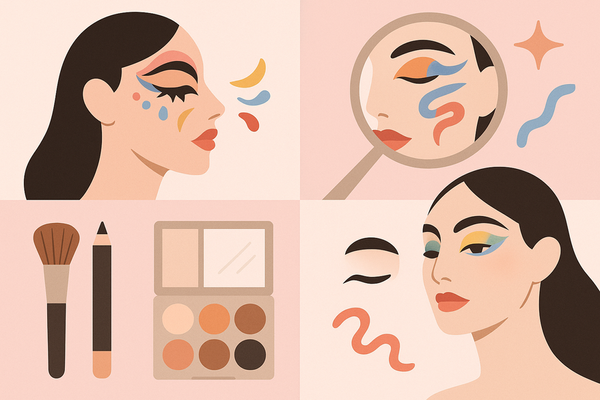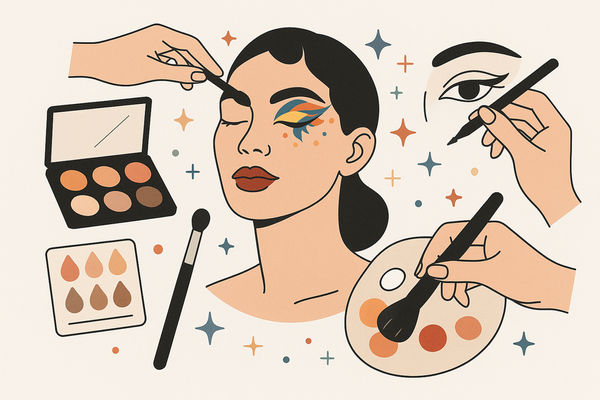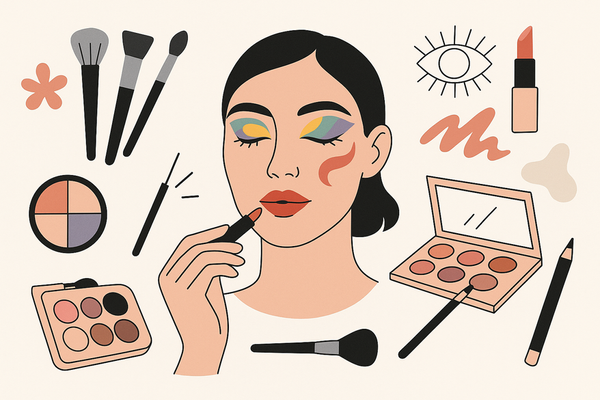The Ultimate Guide to Creative Makeup Designs: Techniques, Inspiration & Trends
Explore creative makeup designs with techniques, trends, and inspiration. Elevate your artistry and master expressive looks with this comprehensive guide.
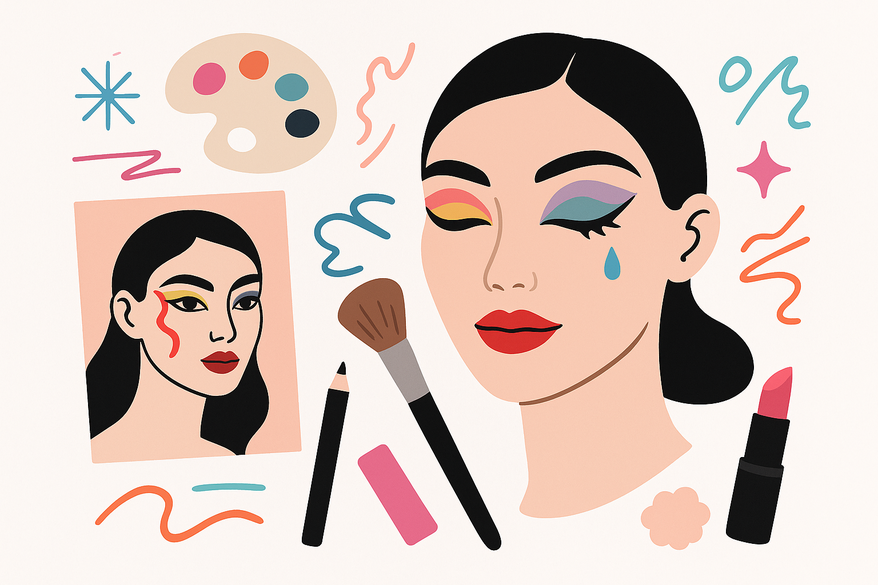
Estimated reading time: 8 minutes
Key Takeaways
- Creative makeup transforms the face or body into a bold, artistic canvas beyond everyday beauty.
- Essential techniques include color blending, graphic eyeliner, contouring, and textural accents.
- Draw inspiration from art movements, nature, digital trends, and cultural heritage.
- Watch for emerging trends like holographic pigments, minimalist geometrics, and prosthetic sculpting.
- Prioritize safety: always perform patch tests, use gentle removers, and maintain a clean workspace.
Table of Contents
- Introduction to Creative Makeup Designs
- Understanding Creative Makeup Designs
- Techniques and Tips for Creative Makeup Designs
- Inspiration and Ideas for Creative Makeup Designs
- Expert Advice and Trends in Creative Makeup Designs
- Conclusion and Next Steps for Creative Makeup Designs
- FAQ
Introduction to Creative Makeup Designs
Creative makeup designs are an artistic approach to cosmetic application that transforms the face or body into a visually striking canvas, using techniques and materials that go far beyond conventional beauty enhancement. From avant-garde face art to 3D body painting, these looks emphasize storytelling, expression, and bold innovation.
Why they matter:
- They spark conversation on social media and editorial spreads.
- They set trends at fashion weeks, music festivals, and cultural events.
- They empower self-expression and creative confidence.
What you’ll learn:
- A precise definition of creative makeup designs, backed by expert sources.
- How they differ from everyday beauty routines.
- Step-by-step techniques, tools, and product picks.
- Inspiration from art, nature, digital trends, and standout artists.
- Insider tips on emerging trends and safe practices.
- Next steps to master these looks and share your art.
Understanding Creative Makeup Designs
Creative makeup designs break away from “natural” finishes and routine enhancements. They turn the face into an artistic playground, bold and unrestrained. From AI-driven boundary-pushing looks like those highlighted in Pushing Beauty Boundaries: Creative Makeup Designs with AI Makeup Generators, to handcrafted editorial masterpieces, the possibilities are endless.
Key contrasts
- Conventional makeup aims for symmetry, subtle enhancement, and a polished, “natural” look.
- Creative makeup embraces asymmetry, dramatic shapes, bold pigments, and narrative storytelling.
Historical & cultural influences
- Ancient Egypt: Kohl-lined eyes as art, status symbols, and protective talismans.
- 1960s Mod: Graphic lines, pop-art dots, and bright color blocking define a revolutionary era.
- Digital Age: TikTok and Instagram accelerate trend evolution, blending global motifs overnight.
Versatility & forms of expression
- Art-inspired: Abstract expressionism, optical illusions, pop art dots.
- Fashion editorial: Haute-couture color blocks, runway face-sculpting.
- Nature motifs: Butterfly wing patterns, floral petal framing, sunset gradients.
- Fantasy & cultural motifs: Tribal patterns, mythic creatures, heritage dot-painting.
Sources:
Techniques and Tips for Creative Makeup Designs
Master these foundational techniques to build any avant-garde look. Each step combines color theory, precise tools, and safe practices.
1. Color Blending (Keyword: creative makeup designs)
- Use complementary and analogous palettes for smooth gradients.
- Apply shades from inner to outer eye in layers—from light to dark.
- Blend edges with synthetic brushes or damp sponges to avoid harsh lines.
Source: Creative Makeup Designs Guide
2. Graphic Eyeliner
- Tools: Fine-tip liquid liners, gel pots, stencils, painter’s tape.
- Techniques: Map shapes with a white pencil, then fill with bold black or neon.
- Tips: Work in short strokes; correct mistakes with a pointed cotton swab dipped in remover.
Source: Creative Makeup Designs Guide
3. Contouring & Sculpting
- Cream vs. powder: Creams yield sharper lines; powders diffuse softly.
- Brushes: Angled contour brush for precision; fluffy brush to blend.
- Placement: Accentuate cheek hollows, jawline, nose bridge for dramatic shadows and highlights.
Source: Creative Makeup Designs Guide
4. Textures & Finishes
- Glitter & metallic foils: Press on with a tacky primer or skin-safe adhesive.
- 3D elements: Rhinestones, micro-sequins, and feathers—attach with medical-grade skin glue.
- Sequins & prisms: Add dimension to lids and temples; secure edges to prevent lifting.
Source: Creative Makeup Designs Guide
Inspiration and Ideas for Creative Makeup Designs
Jumpstart your creative makeup designs with these inspiration pillars and case studies.
Inspiration pillars
- Art: Abstract expressionism, pop art dots & lines, optical illusions.
- Fashion: Runway editorials, haute-couture color blocking, avant-garde spreads.
- Nature: Floral petals framing eyes, butterfly wing symmetry, ombré sunset lids.
- Digital media: TikTok face-art trends, AR-inspired effects, festival “glow up” looks.
Standout artists & case studies
- Mimi Choi: Hyper-realistic optical illusions (eyes within eyes, melting faces).
- Tal Peleg: 3D rose petal motifs framing the eye socket.
- Cultural heritage looks:
- Aboriginal dot-painting motifs across cheeks and forehead.
- African tribal patterns mapped onto temples and jawline.
- Festival & cosplay: Neon brows, UV-reactive paints, glow-in-the-dark highlights (see 15 Show-Stopping Festival Makeup Ideas to Elevate Your Concert Look).
Sources:
Expert Advice and Trends in Creative Makeup Designs
Level up your creative makeup designs with pro insights and forecasted trends.
Professional insider tips
- Push boundaries: Integrate unconventional textures—wire, feathers, fabric scraps.
- Skin health first: Always patch-test adhesives, use gentle removers, and hydrate skin post-wear.
- Workspace prep: Clean brushes often; disinfect surfaces to prevent irritation or infections.
Source: Creative Makeup Designs Guide
Emerging trends
- Holographic & duo-chrome pigments: Shift color in different lights for otherworldly effects.
- Prosthetic sculpting: Lightweight silicone accents (horns, ridges) for 3D drama.
- Minimalist geometric art: Fine-line color blocking, negative-space shapes.
- Storytelling sequences: Series of looks that convey an emotional or narrative arc (also see Avant-Garde Makeup Trends: How an AI Makeup Generator Is Shaping the Future of Beauty).
Source: Art on Your Face: Creative Makeup Designs
Conclusion and Next Steps for Creative Makeup Designs
By exploring creative makeup designs, you’ll gain artistic fulfillment, deepen technical skills, and amplify personal expression. Whether you’re a hobbyist face-painter or an aspiring professional makeup artist, these techniques and inspirations will guide you to new creative heights.
Next steps:
- Dive into tutorials: Seek out video walkthroughs and step-by-step photo guides.
- Build a toolkit: Invest in high-pigment palettes, specialist brushes, and quality adhesives.
- Join communities: Share your work on forums, participate in challenges, and learn from peers.
- Create & share: Post your designs with a branded hashtag, tag makeup-artist groups, and ask for feedback.
Start your next creative makeup designs project today. Sketch an idea, experiment with textures, and don’t fear bold color. Share your results with #MCACreativeCanvas and join our Makeup Check AI community to get expert feedback and showcase your artistry.
Sources:
FAQ
What is creative makeup design?
Creative makeup design is an artistic practice that uses the face or body as a canvas, employing bold colors, dramatic shapes, and 3D elements to tell a visual story rather than simply enhance natural features.
How can beginners start experimenting with avant-garde looks?
Begin with basic tools—pigmented shadows and a fine-tip liner—follow online tutorials, practice simple graphic shapes, and gradually add textures like glitter or small rhinestones.
Are these techniques safe for sensitive skin?
Yes, when you choose skin-safe adhesives, perform patch tests before application, and use gentle, oil-based removers to avoid irritation.
Where can I find ongoing inspiration?
Explore art museums, fashion editorials, social platforms like TikTok and Instagram, and cultural heritage sources. Curate a mood board to continually refresh your creative vision.

